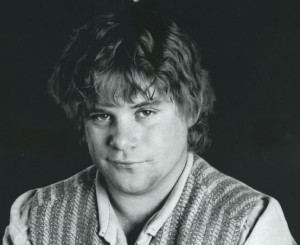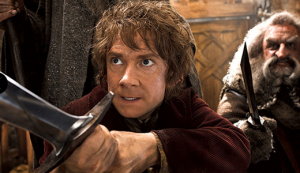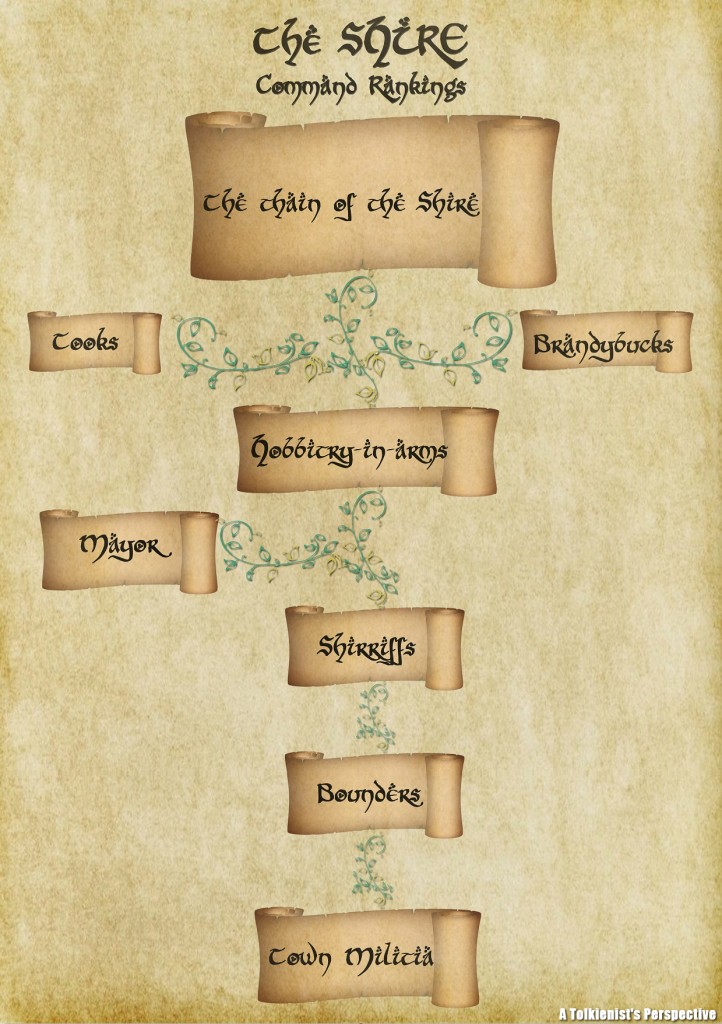They are (or were) a little people, about half our height […] have long clever brown fingers, good-natured faces, and laugh deep fruity laughs
The Hobbit, ‘An Unexpected Party’, Chapter I
 Ranks of skilled archers cleverly readying their bows. Organized groups of infantrymen waiting for the signal to attack. One word and any intruders will find themselves facing serious consequences.
Ranks of skilled archers cleverly readying their bows. Organized groups of infantrymen waiting for the signal to attack. One word and any intruders will find themselves facing serious consequences.
It is hard to conjure up the imagery of an army within the Shire, based on the rather rustic and easy-going characteristics of the above quote.
Yet, these are the Hobbits of the Shire – as penned by master fantasy writer, J.R.R. Tolkien himself. The nature-loving, food-consuming folk, conceal a fierce sense of love and loyalty to their own people and the land: giving rise to a modest force of defence that joins the ranks of the more popular – and significantly larger – armies in Middle-earth.
Peaceful Halflings?
Reading The Lord of the Rings, we do not fall under the impression that Hobbits are born as warriors – albeit in exceptional circumstances, such as Sam’s defiance at Cirith Ungol or Merry and Pippin’s presence in the battles of the War of the Ring.
Though slow to quarrel […] at need could still handle arms. They shot well with the bow, for they were keen-eyed and sure at the mark.
The Fellowship of the Ring, Prologue: ‘Concerning Hobbits’
It is not unreasonable to think that the Shire maintained a small armed force for its own protection and that of the people. Indeed, during Bilbo’s time “there was still some store of weapons in the Shire” (The Fellowship of the Ring, Prologue: ‘Concerning Hobbits’).
The Thain of the Shire
Whilst Hobbits do not appear to have had any specific military system, we are informed that the Thain was the leading authority in terms of an armed force.
The Thain was the master of the Shire-moot, and captain of the Shire-muster and the Hobbitry-in-arms.
The Fellowship of the Ring, Prologue: ‘Of the Ordering of the Shire’
The Hobbitry-in-arms would undoubtedly have consisted of a small force of archers and casual infantrymen with rudimentary weapons for swords and spears.
However, Tolkien was quick to state that these meetings and musterings were uncommon, and that by the start of the War of the Ring, had almost ceased to exist. However, as we shall see, the events at the Battle of Bywater, reintroduced these customs for the defence of the land.
The Shire as a Battlefield
So ended the Battle of Bywater, 1419, the last battle fought in the Shire, and the only battle since the Greenfields, 1147, away upon the Northfarthing.
The Return of the King – ‘The Scouring of the Shire’, Chapter VIII
The Battle of the Greenfields was fought as a result of the Hobbits’ response in repelling a strong band of Orcs that had made its way too far west and into the Shire.
It is a remarkable fact that, although Tolkien tells us halflings were not warlike and did not have particular skill in arms, they managed to overthrow a band of orcs – who were significantly larger and more efficient in combat.
This point sustains the possibility that even in times of peace, selective groups of Hobbits would have underwent some form of training routine to hone their sword-wielding and archery skills.
***
 Almost three hundred years later, history repeated itself, when the Shire was invaded by ruffians at the end of the War of the Ring, and the Hobbits rose to face this peril.
Almost three hundred years later, history repeated itself, when the Shire was invaded by ruffians at the end of the War of the Ring, and the Hobbits rose to face this peril.
Whilst Pippin rides towards Tookland, hoping to urge the Thain to muster his forces and bring “back an army of Tooks in the morning”, the rest of the hobbits around Hobbiton make their own preparations.
[…]more than a hundred sturdy Hobbits were assembled with axes, and heavy hammers, and long knives, and stout staves; and a few had hunting bows.
The Return of the King – ‘The Scouring of the Shire’, Chapter VIII
Akin to the Battle of Greenfields, the Battle of Bywater saw an enemy force that was considerably stronger and physically larger than the apparent feebleness of the Hobbits.
Shirriffs and Bounders
Apart from the reference to archers and a few troops, Tolkien gave us fragments of information indicating the presence of a systematic armed force among the Hobbits.
The Shirriffs was the name that the Hobbits gave to their police, or the nearest equivalent
The Fellowship of the Ring, Prologue: ‘Of the Ordering of the Shire’
During the events of the Scouring of the Shire, the Shirriffs were group leaders under the command of the ruffians, with no authority whatsoever: except for overseeing their respective band of Hobbit recruits.
A rather larger body, varying at need, was employed to […] see that Outsiders of any kind, great or small, did not make themselves a nuisance.
The Fellowship of the Ring, Prologue: ‘Of the Ordering of the Shire’
These Bounders, we are told, had increased substantially during the War of the Ring, in order to keep at bay any intrusions in the Shire.
Similar to the armed force in Tookland, Bounders would most likely have been simple Hobbits – with limited training experience – recruited to carry out such tasks: a proper example of a militia in the Shire.
Mapping a Structure
With this information in mind, it would be possible to sketch a rudimentary hierarchical tree of the military structure in the Shire.
It is by no means an accurate rendition, and does not necessarily represent strict divisions between the diverse titles and a chain of command.
For the full article, head over to: A Tolkienist’s Perspective




One Comment